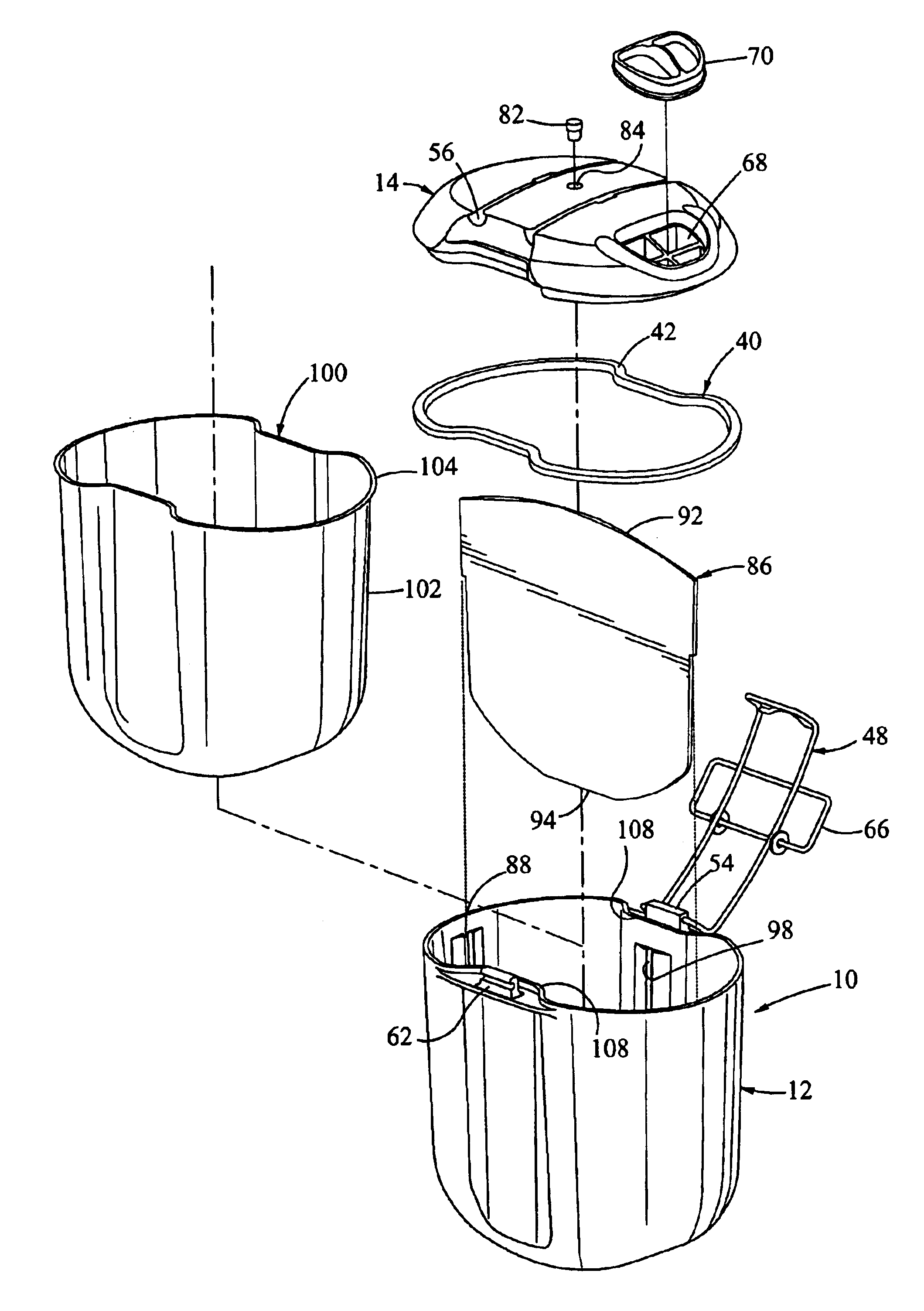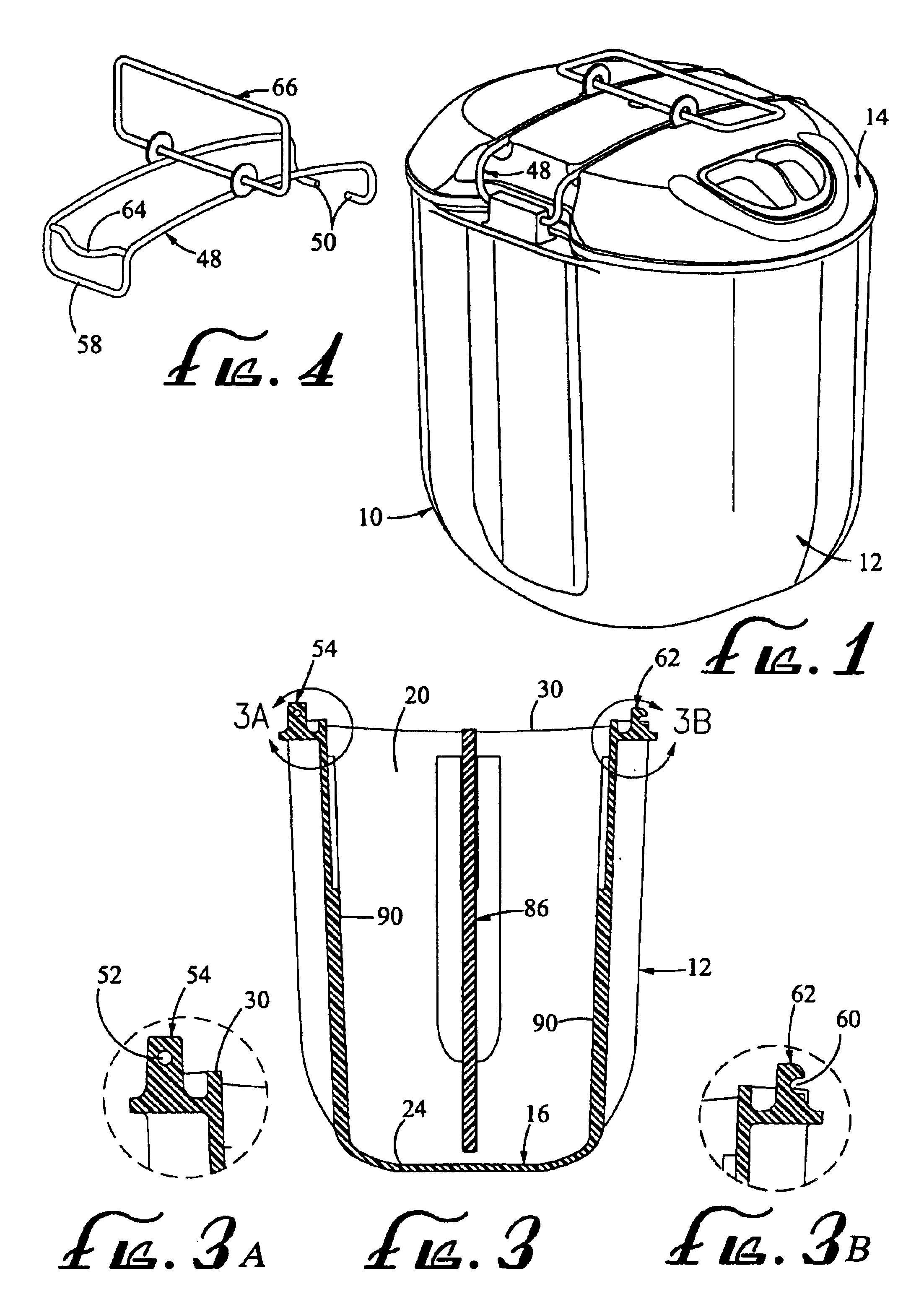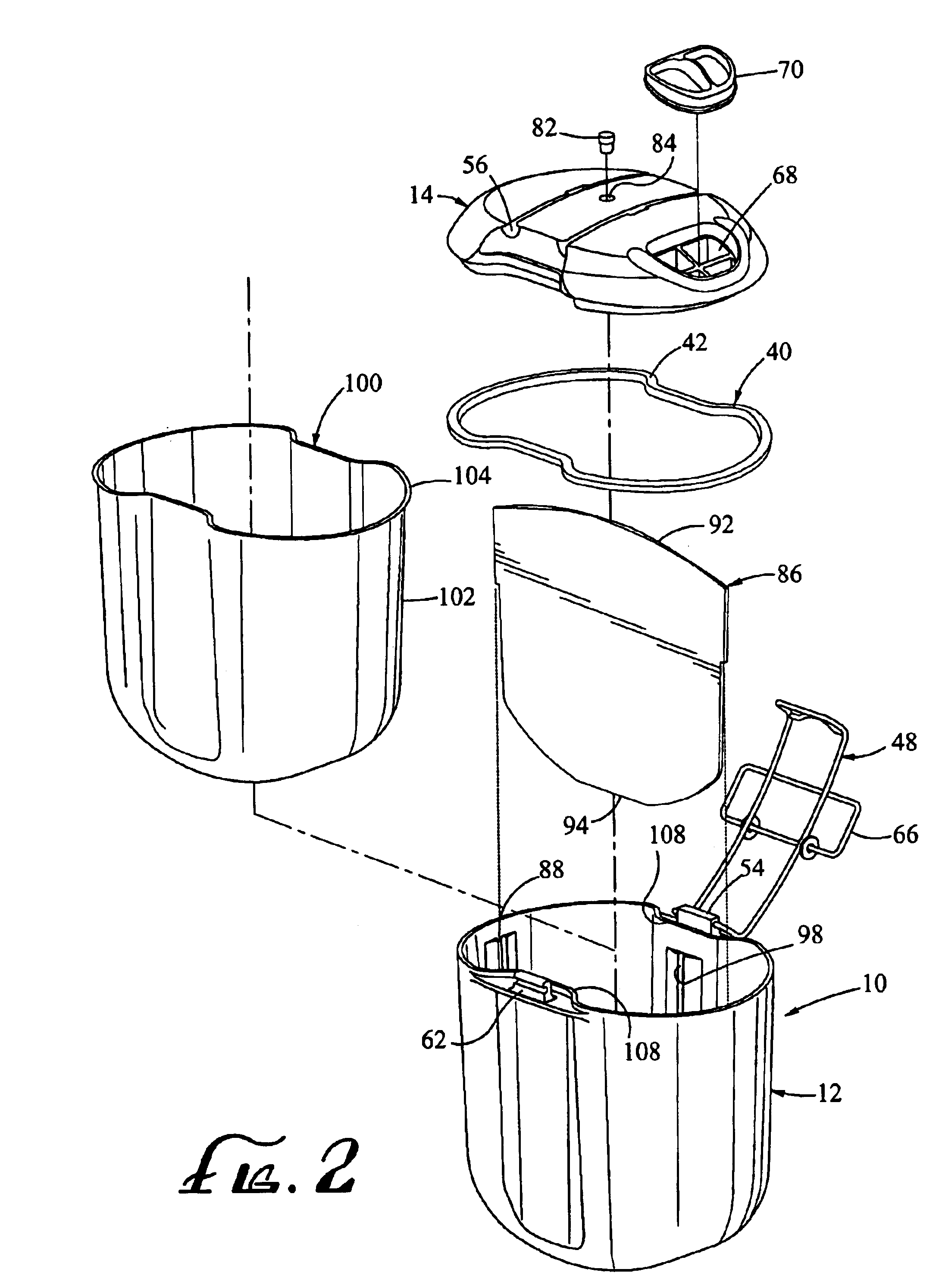Large mouth centrifuge labware
a centrifuge and labware technology, applied in the field of centrifuge labware, can solve the problems of difficult to remove pellets from the bottom of labware difficult to remove pellets, etc., and achieve the effect of satisfying this need
- Summary
- Abstract
- Description
- Claims
- Application Information
AI Technical Summary
Problems solved by technology
Method used
Image
Examples
example
In one embodiment of the invention, the container 12 has a first transverse axis 26 measuring 177.8 mm and a second transverse axis 28 measuring 137.2 mm. The overall height of the container 12 is 168.7 mm. The bottom wall 16 of the container 12 has a radius of curvature of 115.1 mm. The upper portions 108 of the one or more side walls 18 at the second transverse axis 28 have a radius of curvature of 821.2 mm. The exterior surface 32 of the lid 14 has a radius of curvature of 254.0 mm. The overall height of the labware 10 is 204.7 mm. The design volume of the labware 10 is 2.25 liters. Both the container 12 and the lid 14 are made from polyphenylsulfone. The hinged clip 48 and the handle 66 are made from stainless steel. The structural support 86 is made from polyetherimide. The liner 100 is made from low density polyethylene. The gasket 40 is made from food grade silicone and the air vent filter 82 is made from polypropylene. This embodiment is designed for use in an Avanti J-HC Ce...
PUM
| Property | Measurement | Unit |
|---|---|---|
| length | aaaaa | aaaaa |
| width | aaaaa | aaaaa |
| distance | aaaaa | aaaaa |
Abstract
Description
Claims
Application Information
 Login to View More
Login to View More - R&D
- Intellectual Property
- Life Sciences
- Materials
- Tech Scout
- Unparalleled Data Quality
- Higher Quality Content
- 60% Fewer Hallucinations
Browse by: Latest US Patents, China's latest patents, Technical Efficacy Thesaurus, Application Domain, Technology Topic, Popular Technical Reports.
© 2025 PatSnap. All rights reserved.Legal|Privacy policy|Modern Slavery Act Transparency Statement|Sitemap|About US| Contact US: help@patsnap.com



